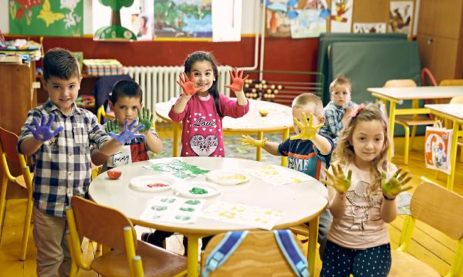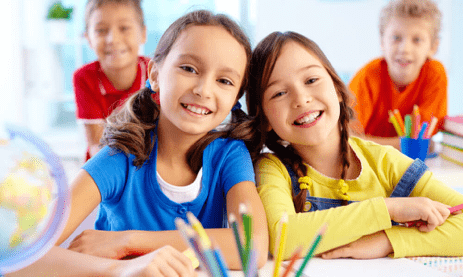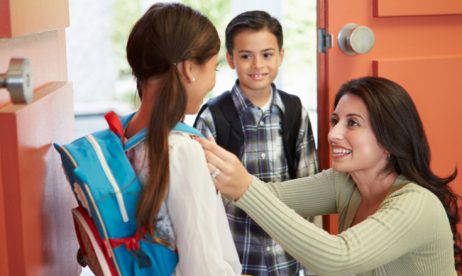Primary Curriculum
The primary curriculum of DPS Jafferguda aims at:
Creating a perennial desire for learning
By inculcating in our learners a desire to learn and by awakening their natural curiosity about the world, we constantly aim to make our students future-ready and make learning an integral part of them.


Building responsible citizens
We believe in creating an empathetic environment through which we seek to create a world of conscientious citizens, who develop an understanding of social problems.
Equipping Students with critical 21st century skills
By teaching them the tools for success in work and life – thinking, research, communication, self-management and social skills, we want to empower all our students with life skills that they would need in order to be successful.

Encouraging a proactive approach
By enabling children to develop their voice and take charge of their own learning and development, we encourage initiative among children. If we want successful innovators tomorrow, we need to teach our students the right approach today.
We take a holistic and integrated approach towards our curriculum, that is based on fundamental aspects of life that can be merged within classroom learning. The curriculum keeps in mind the equality of treatment as well as the equality of outcomes, where diversity, differences and disadvantages are considerably taken into account. Based on the framework provided by CBSE, our curriculum has been designed to provide the overall development of children, through its capacity to enforce our fundamental ideologies and concerns of learning through the course of different subjects.
The way in which our curriculum has been designed, focuses majorly on hands-on learning where the students will not only be gaining theoretical knowledge, but will also have practical ways in which to put those theories into practice. This kind of experiential learning is vital for young learners during their formative years. In this way, the holistic development of a child can be ensured where the students will be given the opportunity to explore their personal interests and develop their skills and interests along the way. The essence of our curriculum is to be able to mould and create young learners in a way in which they are able to fully grasp the key aspects of development in their own ways, are able to explore their hidden interests and are able to develop their innate abilities and motor skills. In this way, the curriculum focuses on learning not only through textbooks, but also largely on the ways in which these skills are integrated through the various subjects offered within this curriculum.
STRUCTURE
The Grade wise Subjects offered within this curriculum have been listed below:.
GRADE 1
English, 2nd Language, Mathematics, Science, Contemporary Studies, Digital Technology, PSSHE, Visual and Performing Arts
GRADE 3
English, 2nd Language, 3rd Language, Mathematics, Science, Contemporary Studies, Digital Technology, PSSHE, Visual and Performing Arts
GRADE 5
English, 2nd Language, 3rd Language, Mathematics, Science, Contemporary Studies, Digital Technology, PSSHE, Visual and Performing Arts
While Grades 1 and 2 focus on one primary and a 2nd Language, the 3rd language is not introduced until Grade 3. In this process, the primary and 2nd language are given greater importance in the younger stages so as to help develop a firm hold of one particular language, and then use those techniques moving forward while learning a different language. The subjects per grade and the teaching methods involve instructional and teaching techniques that are used to move students progressively towards stronger understanding and ultimately greater independence in the learning process.
GRADE 2
English, 2nd Language, Mathematics, Science, Contemporary Studies, Digital Technology, PSSHE, Visual and Performing Arts
GRADE 4
English, 2nd Language, 3rd Language, Mathematics, Science, Contemporary Studies, Digital Technology, PSSHE, Visual and Performing Arts
GRADE 6
English, 2nd Language, 3rd Language, Mathematics, Science, Contemporary Studies, Digital Technology, PSSHE, Visual and Performing Arts
While Grades 1 and 2 focus on one primary and a 2nd Language, the 3rd language is not introduced until Grade 3. In this process, the primary and 2nd language are given greater importance in the younger stages so as to help develop a firm hold of one particular language, and then use those techniques moving forward while learning a different language. The subjects per grade and the teaching methods involve instructional and teaching techniques that are used to move students progressively towards stronger understanding and ultimately greater independence in the learning process.
English :
As the Primary language, English forms a major part of the curriculum and accordingly requires more hours. It is a subject in its own right and also a medium of teaching, where understanding the language provides access to the whole curriculum and builds the foundation for learning other subjects. In fact, it would be impossible to teach a child anything without their understanding of a particular language, and the students’ knowledge and understanding of their primary language will also determine their strengths and weaknesses for other subjects.
Other Languages :
The second language requires a considerable amount of time for the student to be able to be fluent in reading, writing, and speaking. The third language becomes a part of the curriculum from Grade 3 onwards and should also be given enough time for the students to generate a strong command over the new language.
Mathematics :
Mathematics forms a core part of the curriculum and requires a great proportion of the curriculum hours to be able to build a strong foundation of mathematical knowledge, encourage logical reasoning and to play an important role in understanding the contents of other school subjects such as science, Social Sciences, and even music and art.
Science :
Science includes a broad description and a wide range of topics including Environmental Science and Climate Change in order to provide an analytical perspective rather than just a descriptive one. It mandates about 80 hours for each grade to be able to thoroughly and analytically teach the subject and make students through these ages more aware of the phenomena and changes happening in the world around them.
Social Sciences :
Social Sciences becomes a part of the curriculum from Grade 3 onwards, primarily to help students at the primary stage to understand the many economic and social challenges and opportunities that need to be addressed effectively. This subject should be given significant importance as students’ progress in order to develop emotionally intelligent learners who are prepared to face new challenges and adjust to unfamiliar situations.
Contemporary Studies :
The time frame for Contemporary studies gives the teacher the opportunity to integrate various other topics into this module. As the student transitions from grade 2 to grade 3, the focus on contemporary studies increases as the student begins to foray into readings of Social Sciences, History and Environmental Sciences.
Digital Technology :
Digital Technology is to be encouraged throughout the 5 years of learning. This would focus on integrating technology not just through one subject but also through the teaching techniques of other subjects so that students are able to gain hands-on experience with technology and familiarize themselves with basic softwares through the years.
PSSHE and Visual and Performing Arts :
A greater number of contact hours have been designated for PSSHE and Visual and Performing Arts as experiential learning is critically important at this age. By Grade 1 and 2, students would have developed their gross motor skills and should be encouraged to do things with their hands and bodies. Moreover, at this age, the expression of students is considered to be more important than their output, where creativity along with a set of skills will generate their outputs. Through these modules, students will be able to engage in purposeful learning that will not only help them to develop their natural abilities, but will also enable them to socialize, work in groups and engage with one another.